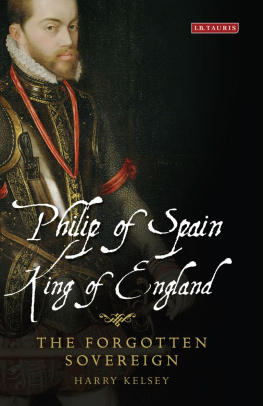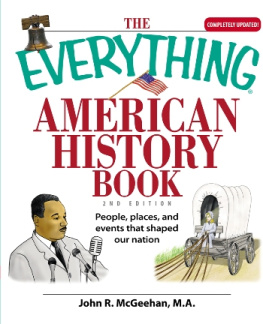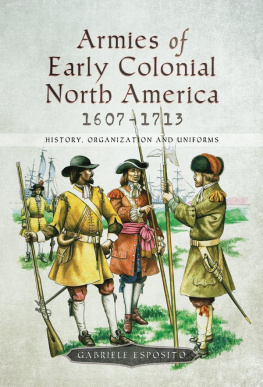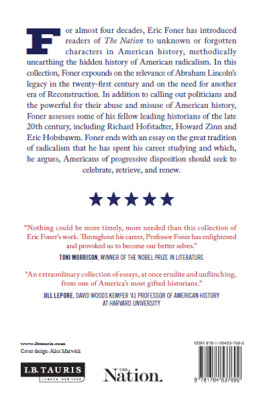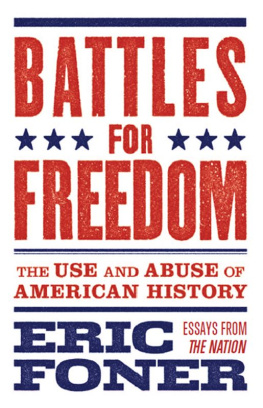PRAISE FOR KING PHILIPS WAR
... superbly researched, well annotated, and written in a lively, entertaining style. It makes a fine addition to the canon of colonial American history.
American History magazine
... a Baedeker for a terribly bloody dispute across Massachusetts, Rhode Island, Connecticut, and Maine.
The Boston Globe
... superb and gripping... King Philips War is exceptionally well-organized, with a cogent history of New England at the time the hostilities began and with chapters devoted to each battle location.
The Worcester Phoenix, Worcester, MA
... does much to reestablish the conflicts importance for popular historical study of the area.
Library Journal
... presented in a clear, concise form that makes the conflict and its implications easy to understand... [a] highly informative and painstakingly researched book.
The Patriot Ledger, Quincy, MA
King Philips War is an unbiased account of the traumatic events of this war of survival on the sacred landscape of our aboriginal ancestors... a well-written work that uniquely identifies key historic sites for the modern reader.
Russell Gardner, Great Moose, Wampanoag tribal historian
During my own research in the late 1940s, I visited many of the sites mentioned in King Philips War, including Wheelers Surprise and the place where Mary Rowlandson spent the first night after her capture, but Eric Schultz has done this exploration more thoroughly and intelligently than anyone before or since. He has made it possible for anyone to find and visit these interesting places. This original and praiseworthy book will be useful for years to come.
Douglas Leach, author of Flintlock and Tomahawk
A significant contribution to the historical literature on colonial wars, King Philips War corrects misperceptions and answers many historical questions about an important seventeenth-century conflict. A valuable narrative history and a wonderful guide to the actual sites of ambushes, raids, and battles, this book will appeal to both academic scholars and general readers.
Patrick Malone, author of The Skulking Way of War
That King Philip, whose head was paraded around the streets of Plymouth in a barbarous show of triumph, was the son of the Wampanoag chief who celebrated the first Thanksgiving with the Pilgrims in 1621 adds to the irony and tragedy of the events, whose memory this well-researched book deservedly keeps alive.... The authors make abundant use of maps and photographs of old sites to enable the reader to follow the course of the war: the book forms an exhaustive guide for the armchair historian or anyone wishing to visit the monuments and battlefields today.
Editorial Reviews, Amazon.com
Schultzs and Tougias evocative descriptions, along with maps, photographs and drawings, would make history come alive to any hiker venturing out to these hallowed grounds.
The Sun Chronicle, Attleboro, MA
Every battle and historic confrontation is described, and the maps showing sites, illustrations and old engravings contribute to a work that history buffs should prize.
Times Argus, Barre, VT
New England history buffs will love using this book to track down hard-to-find King Philips War sites, each of them a story in itself.
Jill Lepore, author of The Name of War

KING PHILIPS WAR
The History and Legacy of Americas Forgotten Conflict

Eric B. Schultz
Michael J. Tougias
Foreword by Nathaniel Philbrick

Copyright 1999 by Eric B. Schultz and Michael J. Tougias
Foreword copyright 2017 by Nathaniel Philbrick.
First paperback edition, 2000. Reissued 2017.
Maps by Jacques Chazaud 1999 The Countryman Press.
All rights reserved.
For information about permission to reproduce selections from this book, write to Permissions, The Countryman Press, 500 Fifth Avenue, New York, NY 10110
For information about special discounts for bulk purchases, please contact W. W. Norton Special Sales at specialsales@wwnorton.com or 800-233-4830
Text design by Dean Bornstein
Cover image: The Battle of Bloody Brook on September the 18th, 1675 (litho), English School, (20th century) / Private Collection / Ken Welsh / Bridgeman Images
The authors and publisher are grateful to the following people for permission to reprint the archival images used in this book: The Haffenreffer Museum of Anthropology and The John Carter Brown Library, both of Brown University; the Hadley Historical Society; the Old Dartmouth Historical Society/New Bedford Whaling Museum; the Peabody Essex Museum; New England Financial Corporation; and the Collections of the Library of Congress. Specific credits are given with each image on the page where it appears.
The Countryman Press
www.countrymanpress.com
A division of W. W. Norton & Company
500 Fifth Avenue, New York, NY 10110
www.wwnorton.com
978-1-58157-489-0 (pbk.)
978-1-58157-490-6 (e-book)
To Susan, Nicholas, Abigail, and Emily
E. B. S.
Contents
We Americans are the best informed people on earth as to the events of the last twenty-four hours; we are not the best informed as to the events of the last sixty centuries.
Will and Ariel Durant
ERIC SCHULTZ WROTE THE MAJOR SHARE OF THIS BOOK; I came on the scene after most of the hard work was done. I thought the reader might be interested in the story behind our collaboration.
When my historical novel about King Philips War, Until I Have No Country, was released in 1997, I received a congratulatory note from Eric, who was a total stranger at the time. Attached to the note was the table of contents of a book he was working on, titled Discovering King Philips War. Being a pack rat, I stuck the note and the table of contents into one of the thousands of files I keep in my messy office, and forgot all about it.
A year later I began work on a short book about the war, which would include maps, roadside history suggestions, and eyewitness accounts. (Id given dozens of narrated slide presentations to historical groups about the war, and people would always ask for directions to battle sites or express curiosity about what diaries I used in my research. These requests were what prompted my project.) After writing about a third of the book, I vaguely recalled Erics table of contents, and after a couple hours of searching I located it. I quickly realized the book he was working on was similar to my own. Maybe, I thought, I should meet him and see if we couldnt split the research and writing. I called him, suggested we meet for coffee in a couple weeks, and asked him to first send me a portion from the book.
When his manuscript arrived, I was stunned. It was fantasticwell written, impeccably researchedthe kind of book I go out of my way to buy for my own use. In a smooth style, he had pieced together some of the lesser-known events of the war and even solved some mysteries.
His manuscript was also largely completed. It really didnt need much editing, so I merely did proofreading and fact checking and outlined a promotional plan. All I could offer was to add the diaries and the maps and then find us a publisher.


